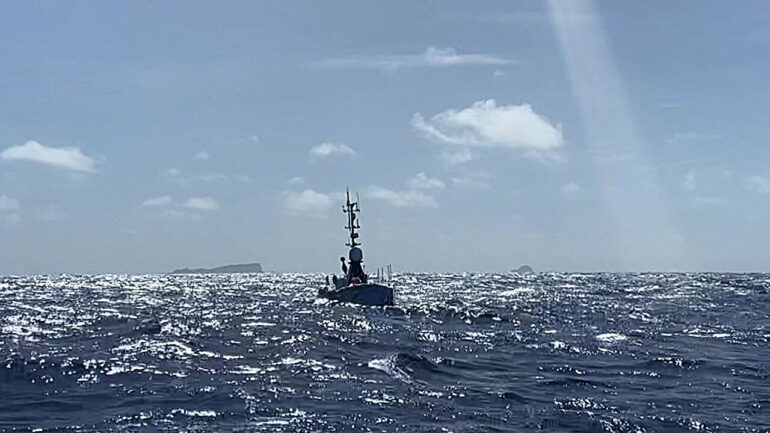A remotely controlled research vessel has gathered some of the first comprehensive measurements from within the massive crater left by the Hunga volcano (formerly known as Hunga Tonga-Hunga Ha’apai) after it erupted two years ago.
The underwater eruption of the Tongan volcano in January 2022 sent a plume of ash and gas 20 kilometers (12 miles) into the atmosphere and excavated a crater 850 meters (half a mile) deep on the ocean floor. The eruption’s effects above the ocean have been well studied, thanks to comprehensive networks of global monitoring systems. But logistical difficulties and ongoing danger made it harder to investigate underwater conditions following the eruption.
Sharon Walker and Cornel de Ronde present one solution: an uncrewed vessel piloted by remote operators 16,000 kilometers (10,000 miles) away. Their work is published in the journal Geochemistry, Geophysics, Geosystems.
In new research, they share results from three missions over the crater undertaken in summer 2022. The research vessel, operated by technicians in the United Kingdom, was equipped with multibeam sonar for mapping the crater and instruments to measure characteristics including temperature, turbidity (cloudiness), and the chemistry of the water within.
The authors found evidence of ash plumes and ongoing venting within the crater seven months after the eruption, as well as separate areas of carbon dioxide degassing, indicating the site remained active.
The high crater rim was trapping much of the plume within the crater, with small amounts escaping through two breaches, which could affect ecological recovery in the area, they report. It’s not yet clear whether the plume was due to volcanic or hydrothermal activity or some combination of the two.
The mission’s success in using a remotely controlled vehicle to conduct comprehensive sampling of an active submarine volcanic crater highlights the value of uncrewed missions for gathering data in these potentially dangerous environments.
Additionally, finding persistent evidence of venting and degassing at the volcano, despite little evidence of activity on the surface, underlines the importance of underwater missions such as these for monitoring active volcanoes in the oceans, and such missions should be applied elsewhere, they argue.
More information:
Sharon L. Walker et al, Ongoing Activity at Hunga Submarine Volcano, Tonga: The Case for Better Monitoring of Submarine Volcanoes Worldwide, Geochemistry, Geophysics, Geosystems (2024). DOI: 10.1029/2024GC011685
Provided by
American Geophysical Union
This story is republished courtesy of Eos, hosted by the American Geophysical Union. Read the original story here.
Citation:
Exploring an underwater volcano from 16,000 kilometers away (2024, September 12)



